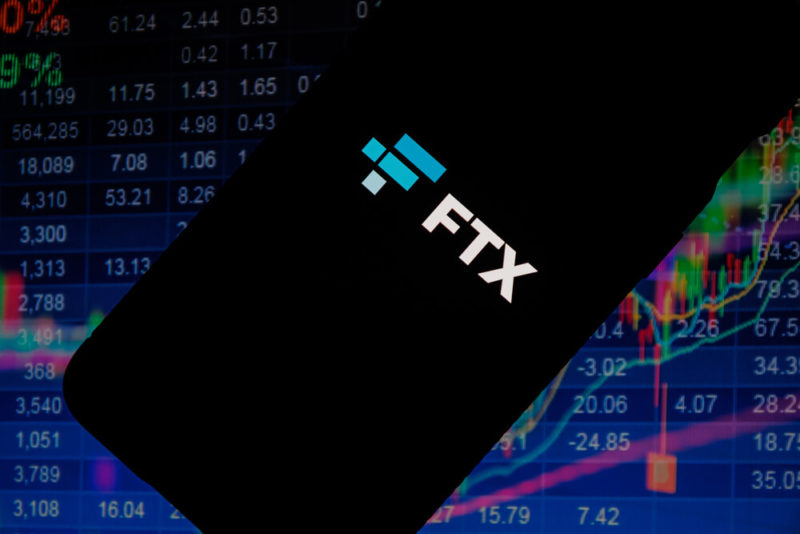What Is FTX & Who Is Sam Bankman-Fried? The FTX Scandal Explained in 2025
The FTX implosion has rocked crypto investors to their core, casting into doubt the viability of digital currency. What is FTX, and how did it gain the position it had to destabilize the cryptocurrency world so completely?
Key Takeaways: Bankman-Fried’s FTX Scam
- FTX was a giant in the crypto space and served as both an exchange as well as a bank.
- From the start, though, it was heavily intertwined with its sister company, Alameda Research, with the two propping up each others’ business.
- Though FTX was plagued by many issues, the death knell was a liquidity crisis, which forced the company to file for bankruptcy.
- During the crisis, allegations of fraud on the part of FTX surfaced, which eventually led to the arrest of almost its entire leadership, including the CEO and founder, Sam Bankman-Fried.
- In March 2024, Sam Bankman-Fried was sentenced to 25 years in prison and ordered to pay $11 billion for defrauding customers and investors.
In early January 2023, Sam Bankman-Fried — the former CEO of crypto giant FTX — pleaded not guilty to a long string of charges related to fraud in a New York federal court.
After being found guilty, in March 2024, Bankman-Fried was sentenced to 25 years and ordered to pay $11 billion. Keep reading if you want to learn more about what FTX is and how its founder ended up with criminal charges filed against him.
The story is a wild ride from start to finish, involving smart exploitation of opportunities, underhanded dealings and a motley cast of characters that lived in lavish wealth while projecting down-to-earth frugality. At its center stands Sam Bankman-Fried, better known as SBF, the founder of the FTX exchange and also the man who brought it crashing down.
-
03/31/2024
We updated this article to include information about Sam Bankman-Fried’s sentencing.
What Is FTX? What’s Happened Since the FTX Bankruptcy Filing?
FTX is a cryptocurrency exchange, a place on the internet where you can exchange or buy cryptocurrencies with either cash or other digital tokens. At its height, the FTX exchange was the second biggest platform of its kind, eclipsed only by Binance cryptocurrency exchange — which will make an appearance in the story of FTX’s fall, as well
Currently, FTX is a mere shadow of its former self. At the time of writing, it’s bankrupt, its remnants steered by John Jay Ray III, whose job is mainly to clean up the mess left by Bankman-Fried and his cohort. To give you an idea of the magnitude of the task ahead, John Ray’s other accolades include taking over Enron after a massive accounting scandal in the early 2000s.
FTX, Digital Markets and Alameda Research
With its leadership in the dock and its assets stripped, FTX is just a shell of what it once was. Things started off so well, too, when it was founded in 2019.
Its rise was stratospheric, going from a relative unknown to Bankman-Fried sharing the stage with the likes of Bill Clinton and Tony Blair, where SBF would talk confidently about the future of crypto and decentralized finance.

However, before there was FTX, there was Alameda Research, a hedge fund started in 2017 by Bankman-Fried and a small group of friends he made at his old job at Jane Street Capital, a leading New York trading firm. This group included Caroline Ellison, a mathematician and quantitative analyst, somebody who analyzes trades using large amounts of numerical data.
Hedging and Arbitrage
As a hedge fund, Alameda focused less on trading assets directly and more on financial derivatives, particularly something called arbitrage. For a full explanation of how arbitrage works, you should check out Investopedia, but in short it’s the exploitation of price differences of a stock or commodity on different financial exchanges.
In this case, Alameda would buy Bitcoin on a U.S.-based exchange and then sell it for a profit on a South Korean one. South Korea tightly regulates cryptocurrencies and, as a result, $10,000 worth of Bitcoin bought in the U.S. could sell for as much as $15,000 there.
Known as the “kimchi premium” after Korea’s national dish of fermented cabbage, clever use of this opportunity meant Alameda was pretty much rolling in dough.
Of course, an opening in the market like this, where you can on a good day make 50% on top of your investment, isn’t going to be your sole preserve forever. Over the course of 2018 and 2019, bigger players started muscling in on Alameda’s arbitrage action, as well as the crypto market as a whole, squeezing the margins of smaller outfits like Bankman-Fried’s.
Founding the FTX Platform
Though it’s hard to determine exactly which events led up to it, in 2018 Bankman-Fried started FTX, short for “futures exchange.” Where Alameda was a fund that traded in the crypto market, FTX was a crypto exchange, a place where people who want to play in the crypto market can go to convert their real-world money into cryptocurrencies.

This was a huge leap: instead of a trading firm, Bankman-Fried now ran a bank of sorts. In the real world, it likely would have been impossible for a small hedge fund to form a bank, as rules and regulations would have torpedoed the idea before it was even fully formed. In the world of crypto, however, it was as simple as filing the paperwork needed to form any other kind of company.
Bankman-Fried became the chief executive officer (CEO) of FTX, while a fellow MIT grad named Gary Wang became the company’s chief technical officer, or CTO. Ellison stayed at Alameda to run it, though SBF seems to have kept a stake in his old hedge fund, since he later used it to buy seven percent of trading app Robinhood.
Making Markets
However, it’s clear now that SBF didn’t just quietly keep a stake in Alameda and leave it at that. For one, it looks like Alameda operated as a market maker for FTX. It would buy and sell cryptocurrencies that were trading on FTX, but FTX itself couldn’t immediately find a seller or buyer for. This article by The Balance goes into more detail how market making works.
Market making is in no way illegal or even particularly suspect; it’s a very normal phenomenon in financial markets. However, in the case of Alameda and FTX, it seems to have become something of a gateway drug to other activities, some of which are indeed very illegal and are the direct cause for Bankman-Fried’s recent appearances in federal courtrooms.
The result was that until May 2021, when FTX raised $900 million in its first funding round, Alameda was the largest trader on the platform, responsible for much of its $18 billion valuation. Again, not illegal, but it should raise some eyebrows when a company — any company — relies this heavily on one firm to supply such a large chunk of its business.
The eyebrows should go even higher when it turns out both companies are owned by the same person and that the upper echelon of both are all living together in the same apartment in the Bahamas, where FTX was headquartered.
Riding High
At first, though, nobody seemed to put this picture together. From the first funding round in 2021, FTX only kept growing. In January 2022, FTX US, which was spun off from FTX in 2020 and served only U.S.-based customers, raised $400 million at a valuation of $8 billion. The rest of the company, known as FTX International, was valued at $32 billion at around the same time.
With high valuations comes high living. The most public example was how FTX made a deal with basketball team the Miami Heat to sponsor them for $135 million over 19 years, in return for the rights to name the Heat’s stadium “FTX Arena.”

FTX wasn’t just doing PR work, either: it also set itself up as a kind of savior of the crypto industry as it entered the crypto winter of 2022. FTX bailed out crypto lender BlockFi for roughly $250 million when it faced going out of business, as well as buying up Voyager Digital, another cryptocurrency platform in hot water.
While he was doing this, Bankman-Fried also projected an image of being there to help, wanting to save the crypto industry from itself and really only wanting to make money, so he could give it to charity in the name of effective altruism. He drove an old Toyota Corolla, and never wore anything but the most understated of clothes during public appearances.
The FTX Collapse
Renaming stadiums and bailing out competitors aren’t the cheapest of hobbies, though, and rumblings started, wondering where this money was coming from. The first real crack was an article published by Bloomberg in September 2022, which goes over the links between FTX and Alameda, some of which we’ve already touched on in this article.
The Bloomberg story made some waves, but nothing compared to the Alameda balance sheet leaked by CoinDesk. It showed that there effectively was no wall between Alameda and FTX, and that executives for all intents and purposes treated the two companies as being one.
Incentivizing Deposits
The details of how it all worked are pretty intricate, but the simple version is this: customers bought crypto from FTX and then left those coins in an account with the company. They did this because right now most cryptocurrency isn’t particularly useful in day-to-day life; it works better as an investment.
In effect, people were depositing their money with FTX. If you do so with a bank, you can expect to get some kind of return, albeit a small one. FTX wanted to incentivize people keeping their money in the exchange, so it introduced something called a “spot margin.”
The spot margin essentially allowed one user to lend out their crypto token to another and earn some money for their trouble. Thing is, though, that this system relied on crypto always appreciating in value and thus was unsustainable when the market started to go down. Allegedly, to pay the fees for these spot margins, FTX started dipping into deposited funds.
That’s incredibly illegal, but the allegations don’t stop there. The biggest customer making use of spot margins was Alameda, which borrowed money from FTX to buy up more cryptocurrency. Again, this wasn’t FTX’s money, but instead money from their depositors. FTX and Alameda were drawing from their depositors’ assets more than once.
Alameda and FTT Tokens
It gets even worse, too. To make a loan, even from a company owned by the same people, you need collateral, something the creditor can take from you if you fail to pay. In the case of Alameda, the collateral was FTT, FTX’s very own crypto token.
Even among tokens, FTT was a bit of an odd duck, as it was not so much a currency as a stake in the success of FTX. If FTX did well, FTT went up. If FTX did poorly, FTT went down; it was more like stock than a coin. Essentially, Alameda was borrowing FTX’s money — though not, you know, really FTX’s money — using a token backed by the value of FTX.
The problem with incestuous little circles like this is that when things are going well, they go very well, but just one tiny thing can upset the whole delicate machinery.
If a significant number of investors took their money out from FTX — known as a “run” — there simply wouldn’t be enough money to pay all the depositors and investors back, which would bring the whole scheme crashing down.
The Empire Crumbles
Naturally, when CoinDesk broke the news that Alameda’s balance sheet was pretty much all FTT and very little of anything else, a slow-burning panic started. Bankman-Fried tried a two-prong approach: on the one hand, issuing public assurances and on the other, asking Binance to bail him out. Binance initially agreed, but then publicly withdrew. This was the death knell for FTX.
After this, events piled up hard and fast. Naturally, the government got involved, since it wasn’t just a few crypto fanatics losing their life’s savings. FTX counted major stakeholders in their clientele, and these institutions suddenly could no longer access their funds. Even as Bankman-Fried filed for bankruptcy, investigators were hard at work.
It didn’t take long for the full breadth of the goings-on at FTX and Alameda to be revealed. Bankman-Fried first tried to pass it all off as an accounting error, but this was quickly slammed by, well, just about everybody. SBF then tried to pass it off as folly by an inexperienced team, made up of enthusiasts.
This may have been true, but only up to a point. For example, FTX’s chief of operations turned out to have just two years of experience in the sector for Credit Suisse, a bank which faced criminal charges in its native Switzerland. At the same time, a regulatory officer apparently was involved in an online poker scandal a few years before.
What emerged was not a picture of a happy-go-lucky startup run aground on the shoals of the market, but rather one where executives, at best, took a cavalier attitude to their depositors’ money. Federal prosecutors, though, took the narrow view and filed criminal charges for fraud. Bankman-Fried was arrested in his home in Bermuda in December 2022.
In March 2024, Bankman-Fried was sentenced to 25 years and ordered to pay $11 billion for defrauding his customers and investors.
Final Thoughts: SBF and the FTX Implosion
As it stands, the FTX scandal is far from over. The company still hasn’t paid everybody back, and there is a chance it never will. On top of that, while we wait for SBF’s trial to start, new information is coming out almost daily and will likely continue to do so. Until we know more, FTX will mainly serve as a reminder not to trust your money with just anybody.
What do you think of the FTX collapse? Is it a clarion call for better regulation, or was its collapse just the price of doing business? What about SBF, was he a savvy businessman or a dodgy fraudster? Let us know in the comments below and, as always, thank you for reading.
FAQ: Sam Bankman-Fried & FTX
Sam Bankman-Fried is a graduate of MIT, crypto aficionado and accused fraudster, currently awaiting trial in New York in his parents’ home in California.
Sam Bankman-Fried was found guilty of taking customer and investor funds. He was sentenced to 25 years in prison and is required to pay $11 billion.
Right now, nobody really owns FTX, as it has ended up in bankruptcy court. A steward named John Jay Ray III is trying to figure out how to get money back to the people that lost their funds in the FTX crash.
FTX is not a cryptocurrency, it is a crypto exchange, a place where people trade cryptocurrencies. However, FTX did mint its own tokens, called FTT.


